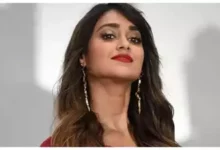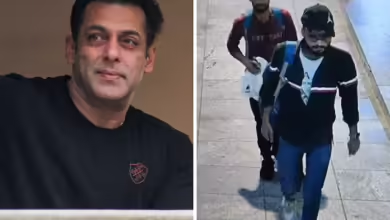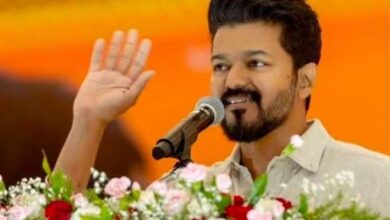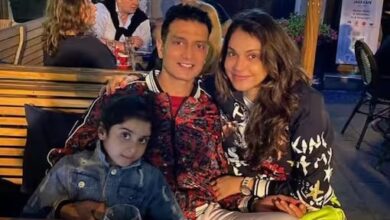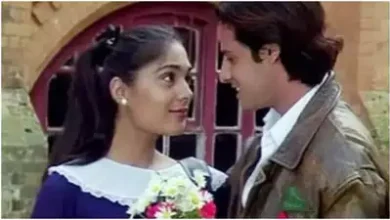In my films, women will always play key roles: Bojanov Konstantin
Payal Kapadia’s “All We Imagine As Light” opens in the Competition section of the Cannes Film Festival in one of India’s greatest years ever, sharing the screen with classics from Paolo Sorrentino, Francis Ford Coppola, Sean Baker, and Yorgos Lanthimos, amongst others.

“Santosh,” the first film by British-Asian director Sandhya Suri, is a competitor in the Uncertain Regard category. “The Shameless,” the Bulgarian director Konstantin Bojanov’s debut in Hindi cinema, is his third feature film after “Ave and Light Thereafter.” With important parts played by Indian actresses Anasuya Sengupta, Mita Vashisht, Tanmay Dhanania, and Rohit Kokate, the movie was filmed in Nepal. In order to learn more about the movie, which Bojanov refers to as a noir thriller, CE met up with him.
A Bulgarian director producing a movie in India. How did it start?
I can only characterize the whole procedure as complete madness. I have been in contact with India for twenty years. Fourteen years ago, I started this project as a documentary based on William Dalrymple’s ‘Nine Lives: In Search of the Sacred in Modern India’. I had four pieces that were somewhat inspired by the book planned to be cross-referenced at the time. One of them spoke about a Karnataka devadasi. The other three focused on a Keralan Theyyam dancer, a Jain nun, and a Tamil Nadu-based Hindu idol craftsman.
We started filming the Devadasi narrative in 2014. After two weeks, I made the decision to set the documentary project aside and use the inspiration to create a fictitious narrative. It’s what I would call a noir thriller. Making a realistic movie or a social drama was never my intention. I don’t produce realistic movies. More of a tale, this. In addition, considering that I don’t understand the language and have just a passing familiarity with the culture, I questioned if it would be very naive and arrogant of me to attempt a genuine play. As a result, writing the script took a very long time.
The main character of the movie is Nadira, a young lady who, at a brothel on Delhi’s GB Road, murders a police superintendent before running away. She heads north to a made-up city, where she finds refuge among prostitutes and adopts the Hindu name Renuka. It’s a fairly closed-off group with strict regulations of its own. She develops feelings for a girl who should have been in the workforce for a long time, but because of an accident when she was a child, everyone in the family and neighborhood believes that something is wrong with her. She hides behind it, shielding herself from having to deal with the family business.
I firmly think that tales should be shared, and I reject the type of cultural xenophobia that views stories as exclusive to a certain group of people. Stories, in my opinion, unite us. Because of this, I place a lot of attention on the connections and dynamics in the tale that are universal. You may be surprised to learn that “One Flew Over the Cuckoo’s Nest” served as my primary source of structural inspiration. the situation in which a stranger who finds themselves in a difficult situation chooses to join a closed group. It has to do with embracing or going against the system. The protagonist, Renuka, is also someone I like and can identify with. I’m not very good at understanding guys. In my films, women will always be the main characters. The majority of my pals in my personal life have also been women.
Is it because it’s simpler to get along with women?
Compared to males, I can connect to women and their emotions more easily. I’ve never been a man who likes to hang out and engage in activities often associated with males. Simply said, I’m not into it. Right present, I’m working on a novel heist thriller with a female lead.
You said that it took a while to write the script.
The main difficulty I had was writing this script in English. I worked with many consultants as I developed the script. The movie, which is in Hindi, takes place in a made-up North Indian city. Because it may be somewhat challenging to handle situations while speaking in a region’s vernacular if you don’t get it properly, I purposefully kept the Hindi more general rather than regional. I tried working on the conversation with so many people—I can’t even remember how many.
I got to know Anurag Kashyap throughout the documentary’s development. He asked me over after our ten-minute meeting in Cannes. I stayed at his apartment when I initially went to Mumbai. As a result, he has been a huge assistance throughout the years with his connections, and a few of the individuals that worked on the movie came via him.
Where are the movie’s actors and crew from? Why did it take place in Nepal?
Our film was produced on a very tight budget. I hired several performers from Nepal for the supporting roles, but the main cast is Indian. That was a rather challenging assignment. They weren’t native Hindi speakers. I didn’t like the way they were behaving. I spent weeks searching for non-actors. However, they would not appear. The majority of the characters are female, and their families or spouses have to concur. In the end, I’m rather pleased with the supporting cast. However, it was difficult. Our budget was much too little to hire a reputable, skilled line producer for the film’s Indian production. Essentially, we utilized Kathmandu as a set.
Famous Indian actors Mita Vashisht, Tanmay Dhanania, and Rohit Kokate are in the key roles.
My main cast was outstanding and very committed. Having Rohit Kokate was enjoyable. The film ‘Lovefucked’ (formerly titled ‘Jaaoon Kahan Bata Ae Dil’) caught my eye on Netflix and I decided to hire him because of the rich, multifaceted character he portrays. He plays an ambitious politician in our movie.
Tanmay is someone I’ve known for a very long time because to my pals who are filmmakers in Kolkata. They travel in tiny clusters. To an outsider seeing the production, however, Anasuya Sengupta—who portrays the lead character Renuka—is the most unexpected casting decision. In Mumbai, casting took place for almost eight months. A number of very renowned Indian female performers from indie film expressed interest. Still, I couldn’t stop staring at this woman’s Facebook photos. Through the Kolkata community of filmmakers, I was able to get in touch with this artist and production designer. She had a certain character that I could see in her attitude as much as her appearance. When she finally responded after a month, she was shocked beyond belief. I had already hired Tanmay by then, and it wasn’t until I saw him paired on her audition recordings that I discovered they were living together in Goa. Working with Mita was a pleasure. Her work added a great deal of intrigue to the dynamics of the movie.
There’s a travel component to your movies…
This film, like every other one I’ve created thus far, is about escape. The main idea is to get away from oneself and one’s surroundings. I have an artistic background. I was an artist for a long time, but I had to take a break from it. I really miss it, but I had to get my film work done. Invisible, my first feature documentary, focused on a group of young individuals who were heroin and other major drug addicts. Early in the new millennium, heroin was rife in Bulgaria. That was an escape route as well. It was less of a sociological documentary and more of an existential analysis of their life, providing them with a forum to discuss their surroundings. The folks in Ave are traveling, while in Light After that, a young autistic youngster sets out to find his hero. One of the women in ‘The Shameless’ is a murder suspect who was trafficked to Sonagachi in Kolkata and is now at large. After escaping, she was imprisoned, released, and forced to fend for herself once again. The main character in my next book attempts to get away by stealing an art gallery.
It seems that a large number of nations, including Taiwan, India, Nepal, France, Bulgaria, and Switzerland, collaborated to develop this movie. Is that how the film industry will prosper both now and in the future?
This is a low-budget movie. We had to combine funds from a plethora of little financing organizations and sources. In the end, it became a central production involving four nations. I was a little taken aback to see that, of the films I watched at Berlinale and read about in the catalogue, very few were available in just one language. It’s because we live with individuals from many cultural backgrounds. If a movie is financially successful in India, it may be funded in a few days and the money invested in it can be recouped in a single weekend. You cannot invest in equities in Europe. Usually, you have to go through this drawn-out application procedure. You have no idea how many financing agencies looked at a project like this one, which is directed by a Bulgarian and is about a love connection between two women. It is set in India, has no aspects of Europe, and is in Hindi.
Critics’ Week 2011 featured your feature debut, Ave, which is now The Shameless. What distinguishes Cannes from other cities?
The reveal. Its track record of excellent picks is highly constant when compared to other A-list events. More diversity, more women, and more directors from many cultures have emerged in recent years—perhaps long overdue. There’s also the celebration aspect, which I avoid. I’m excited to see some folks I know well and others who may have films there. Meeting new individuals is more exciting to me than walking the red carpet. Being in front of the camera bothers me.
Is it too soon to inquire about the movie’s intentions to be shown in India?
I am aware that an agreement with an Indian producer who intervened during the post-production phase is now being finalized. They are stealing rights from Bangladesh, Sri Lanka, Nepal, and India. Although I’m not sure who they are, I do know that they have watched and enjoyed the movie.

